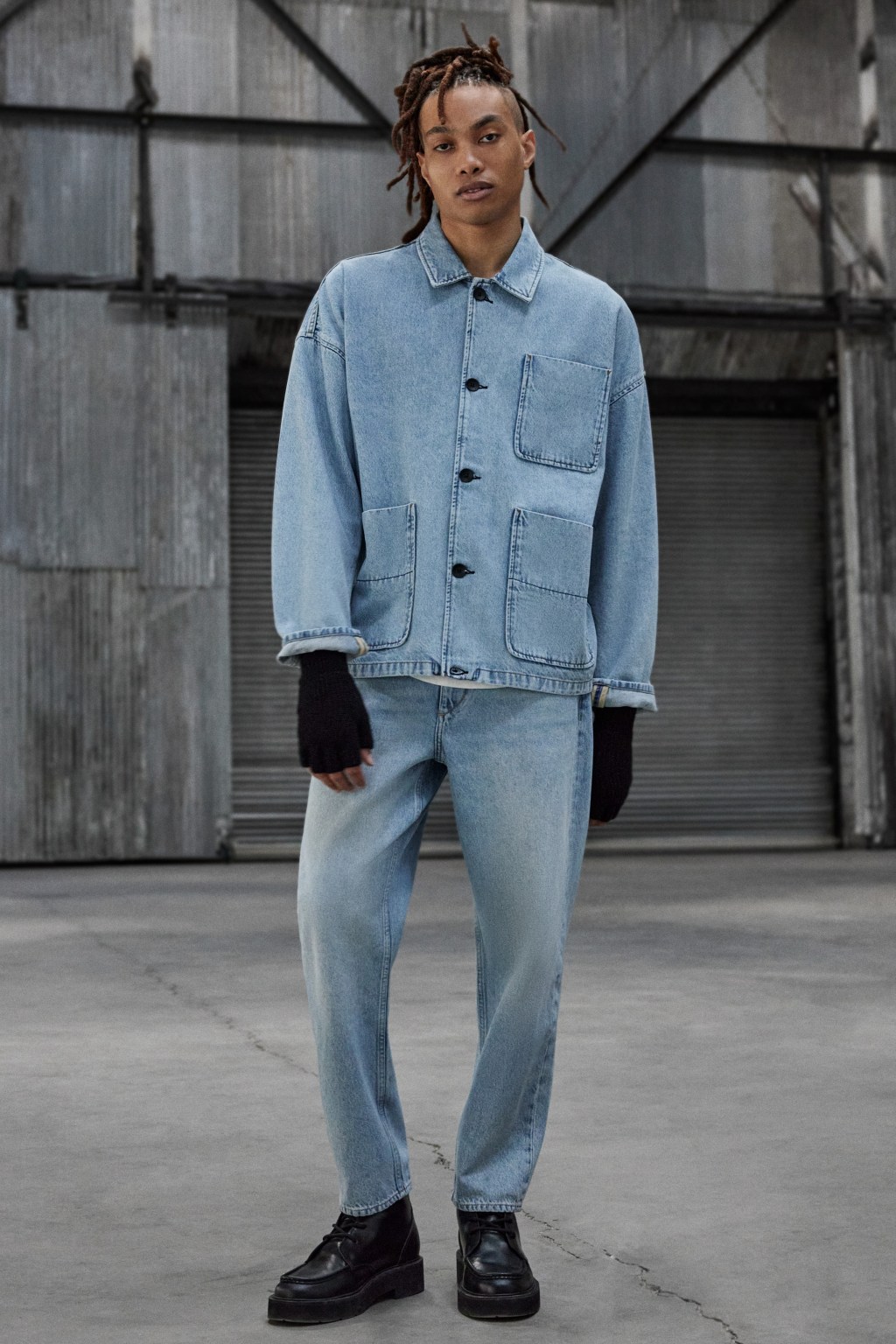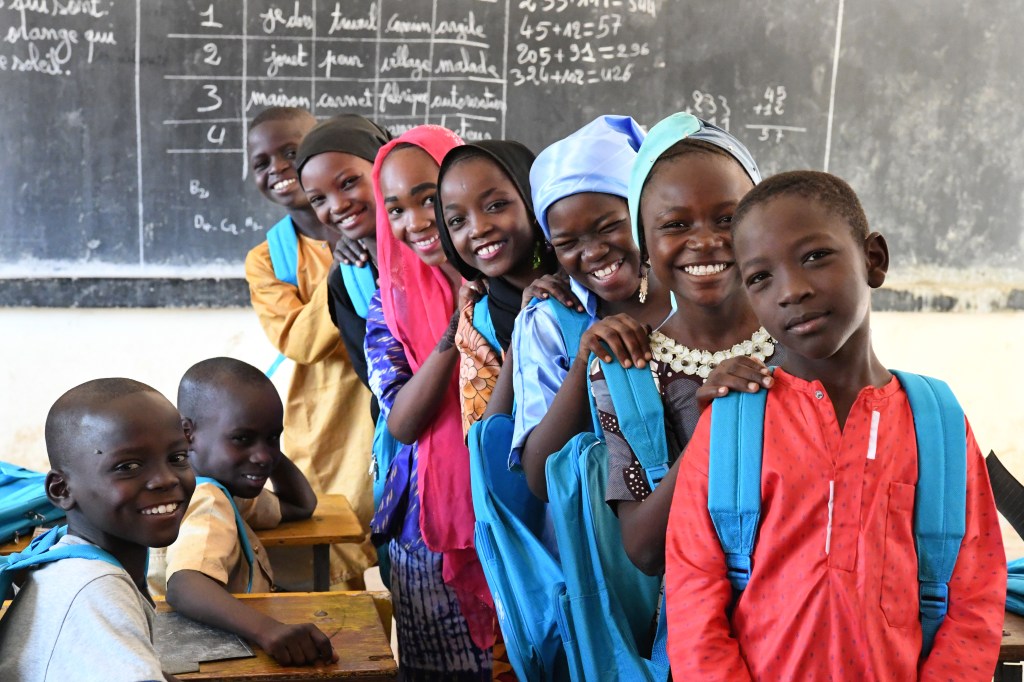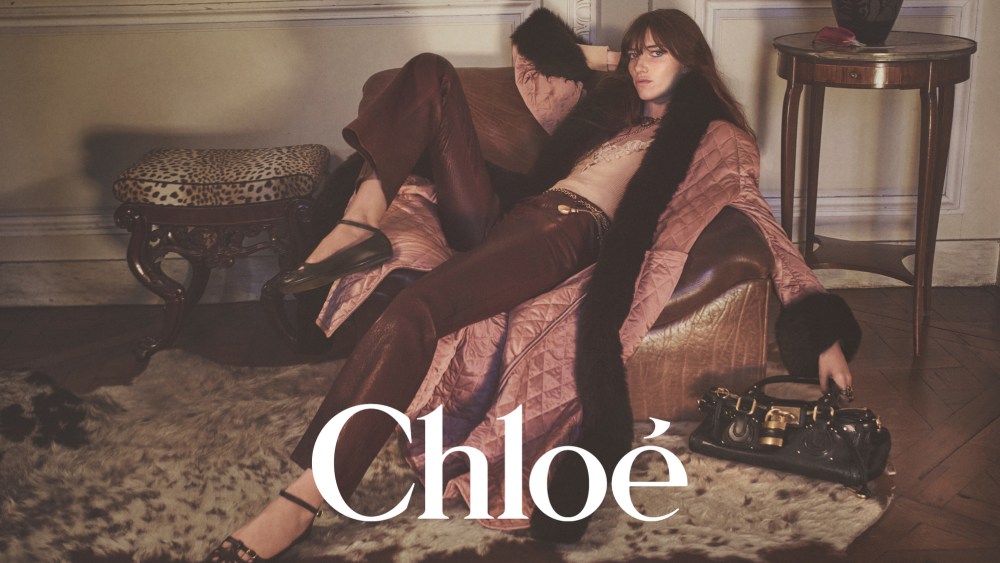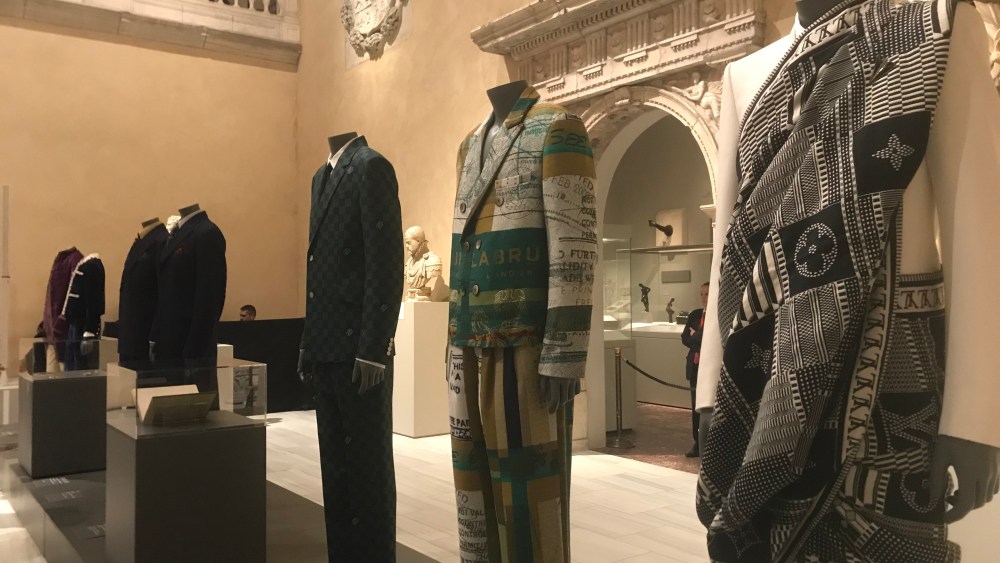Rag & Bone
Robert Geller has a healthy respect for the heritage of Rag & Bone. He knows all about its strengths in denim and modern workwear-inspired silhouettes, but he also recognized that the brand needed some updating to ensure it meets the needs of today’s man.
It was with that as a backdrop that Geller assumed the post of head of menswear design for the New York-based brand in September. He said the collection had already been started by the in-house team, but he rolled up his sleeves and got to work.
First up was to integrate the different parts of the collection: the core staples with the ready-to-wear and the newly launched Pursuit athleisure line.

“Rag & Bone has a really strong denim business, but it always felt apart from the ready-to-wear,” he said. “So I saw a chance to further integrate the collection.”
Ditto for Pursuit, which also seemed to stand on its own. “I love the feel of it, but I saw a chance to create one large collection,” Geller said.
Within each category, he refined the aesthetic and the fit, which he said “felt outdated” since it tended to be slim and tailored. Instead, Geller relaxed the overall shape of the pieces to offer a “little more room,” he said. “Men want to be comfortable but also well put together, so we’re offering beautifully made pieces you can combine to be elegant or sporty — whatever you want.”

For the fall collection, Geller first turned his attention to the denim, offering a Rag & Bone version of a chore coat with patch pockets and a drop shoulder that he paired with cropped and tapered jeans.
He set his sights on a leather bomber, which he offered in a distressed finish that looks new and fresh. “It’s a key item for Rag & Bone, but we’re taking iconic pieces such as this and updating them with treatments and silhouette,” Geller explained.
Other key pieces in his launch collection include stretch dobby shirts; a heavyweight cardigan with an oversize yet still tailored fit, and a flannel suit with a relaxed jacket and wider pants.
“There’s a feeling that the garments have a history — were lived in, authentic, rugged and gritty,” Geller said.
Turning to Pursuit, Geller said he set out to ensure it still had its own identity but would fit in with the collection as a whole. To tie it together, he designed a stripe detail that would run through the line. It was evident in such key pieces as a hoodie and a windbreaker that straddled the line between dressy and casual. “We want to push it forward, but make sure it’s not over the top and is still recognized as Rag & Bone,” Geller said.
Simkhai
Jonathan Simkhai has built a successful women’s collection over the past 14 years, with a Vogue/CFDA Fashion Fund award under his belt, accounts ranging from Neiman Marcus and Saks Fifth Avenue to Nordstrom and Bloomingdale’s, and four of his own boutiques across the U.S.
So it’s not surprising that when he set his sights on launching menswear that it, too, would quickly attract a following.
The collection he will show in Chicago marks the third season for his fledgling men’s line, which he said has achieved “nice traction” since its debut. In his stores in particular, he has found that his female customers have purchased it for the men in their lives as well as for themselves in some cases. “I’m definitely happy with it,” he said of the performance of his men’s line. “It’s gotten off to a solid start.”

Most popular has been the men’s knitwear as well as the soft suiting, he said. With the suits, Simkhai said, he’s found success with young Hollywood stars who are “looking for a young, energetic brand to wear on the red carpet.” For the upcoming season, suits will be oversize and unstructured with an ’80s-inspired sensibility.
At the Chicago Collective, he will be showing both the pre-fall and fall collections. For both seasons, the aesthetic will continue to “lean into East Coast meets West Coast,” which Simkhai said very much reflects his own lifestyle. “It’s California cool but with the cosmopolitan-urban feel of New York.”
The now-bicoastal designer was born and raised in New York, where his family owned a garment manufacturing business. He started learning about the fashion industry at the age of 11 when he worked at a sweater outlet, and at 14, became an assistant buyer at a local boutique. After high school, he attended both Parsons and the Fashion Institute of Technology to develop the experience he needed to one day create his own collection.

He describes his womenswear as “subtly sexy,” an aesthetic mirrored in the men’s line. And he is laser-focused on the details, fit and fabrics offered in the line such as the denim that is produced in L.A. and a rugby shirt with embroidery detail and a blanket stitch on the sleeve.
Although some of the silhouettes are casual, such as hoodies, there are also more polished options, including a knit bouclé cardigan with reverse linking paired with wide trousers. Cashmere quarter-zips with soft trousers, a hand-embroidered sweater vest and a wool herringbone topcoat with a raglan detail on the back are among the key pieces.
“There’s a focus on classics but with a playfulness and a real attention to detail,” he said in describing the line.
Other key pieces include a cashmere pin-striped shirt/jacket and matching elasticized pant that Simkhai described as the new suiting. “It’s easy to wear but with the right amount of buttoned-up and polished.” That also holds true for a pair of knit pants with a fly and zipper so they feel like trousers but are more sporty.
In addition to the more fashionable pieces, Simkhai designs an assortment of basics such as sweatshirts, polos, henleys and T-shirts, many intended to be layered under a jacket.

“I love experimenting with knitwear and tailoring — suits in knit fabrics that feel young and cool,” he said.
Last year the designer rebranded his collection to call it simply Simkhai and he’s using the newly created logo on cashmere beanies in order to further highlight the brand and its new men’s offering.
Orchard & Broome
Zachary Prell got his start as an investment banker and venture capitalist, but the world of fashion spoke to him and while studying for his MBA, he decided to create a contemporary sportswear brand. Prell found success for his eponymous line that started out with men’s sport shirts and eventually expanded into a full collection that was carried in more than 200 stores around the U.S.
But like a lot of brands, Prell was forced to shutter his business during the pandemic due to the “extended, adverse financial impact” that resulted in a winding down of operations.
However, the story doesn’t end there. Prell has regrouped and with the backing of World Textile Sourcing, his longtime Peru-based supplier, he has created a new brand, Orchard & Broome.
Named for the Lower East Side location where Prell lived for eight years, the collection is centered around knitwear that he describes as “a modern luxury uniform at the intersection of luxury and streetwear.” While the Zachary Prell line offered mainly wovens, Orchard & Broome is intended to address the change in menswear toward softer, more comfortable apparel that is versatile enough to wear to both work and on the weekends.

Although Orchard & Broome had a soft launch last season, it has expanded into a full assortment with a dedicated e-commerce site and plans to develop a robust wholesale distribution strategy. Even though the assortment wasn’t fully fleshed out, Prell still managed to sign up more than 15 specialty store accounts for the first season.
For fall, Prell has reimagined basics such as T-shirts, henleys, polos, sweatshirts, hoodies, pants, trousers, shorts and joggers in Peruvian pima cottons and cotton-stretch blends. While the silhouettes may be familiar, Orchard & Broome features “minimalistic, thoughtful design details” that set it apart from other lines, Prell said. For example, there are hidden coin pockets in the joggers, back sleeve seam details and invisible key pockets on the long-sleeve Ts, mother-of-pearl buttons on the henleys and notch cuffs on the stretch button-downs. Subtle tonal silicone labels that read either O&B or Orchard & Broome are included on each piece.

Every style is named for a different street on the Lower East Side, such as the Ludlow heather cotton T-shirt, the Rivington henley and the Bowery button-down. The color palette is mainly neutrals that are designed to be worn layered, he said. Prices range from $80 for the Ts to $245 for the double-face stretch knit Stanton jogger, which offers an interior flat drawcord with silicone-dipped tip and a rear welt pocket with invisible zip closure.
In Chicago, Prell will also be showing a tight assortment of Italian-made sweaters that will retail for $345 to $395.
“The goal is to create a well-edited complete assortment,” he said of Orchard & Broome. “The last four years have given me a long time to think and I’m excited to be creative again. I was ready for a fresh start and this is my next chapter.”
Bridge & Burn
Take one look at Bridge & Burn and there’s no doubt where the brand got its start. Its plaid shirts, outerwear, sweaters and utility pants scream Pacific Northwest. So it’s no surprise that founder Erik Powell calls Portland, Ore., home.
Powell worked as a software developer and was studying for a masters degree in computer science when he realized he didn’t want to sit in front of a computer all day. He had started making small batch graphic T-shirts out of his garage as a hobby during grad school, so he decided to reverse course and launch Bridge & Burn in 2010. The focus was outerwear.
“When we started, the initial goal was to make functional rainwear because it rains a lot in Portland and to offer something that didn’t appear at REI,” he said.
For the first two seasons he focused on waxed cotton outerwear before expanding into a collection of men’s and womenswear. The company also opened two stores in Portland and the collection continued to grow.
But following the pandemic, Powell got an offer he deemed “very fair” to sell the brand and he decided to take it so he could decompress and relax.
It didn’t take the acquirer long to get into financial difficulty and Powell bought his brand back. While his aesthetic and key items remain the same, he’s looking at 2024 as a new beginning for the company.

For the season, key items from Bridge & Burn will include waxed cotton outerwear, insulated parkas, rain jackets and woven shirts, all inspired by the Pacific Northwest with utilitarian designs and fabrics that are classic and made to last. Many of the pieces are also made from sustainable materials, such as sweaters from sustainable wool and shirts from organic or recycled fabrics.
Powell said since his retail stores have closed, the company is selling direct-to-consumer on its e-commerce site and is expanding into wholesale. Down the road, he said, he may consider adding retail stores again, but not for the next few years.
Krost
Samuel Krost’s commitment to philanthropy has been a core component of his Krost contemporary label since it launched in 2018. With every collection and collaboration, the brand has worked with a nonprofit organization or partner to give back to causes that are important to him and his team.
“How can I be part of the youth making a change, but also pursue my passion within the fashion industry?” he said about the brand’s inception. “Combining those two allowed me to develop the brand story of being mission-driven, being philanthropic, using what’s happening in the world around me as the inspiration behind our collections, using the product that we create to be able to give back and make whatever small impact we were able to make while still building a for-profit business.”
Over the years Krost has partnered with organizations such as March for Our Lives, New York Restoration Project, Team No Kid Hungry, Food Bank for New York City, Oceana and many others.
Krost explained that the brand is focusing its philanthropic efforts on two causes: food insecurity and climate change.
“As we have matured over the years, our level of authenticity and being known as a brand that has been philanthropic before it was a thing — I think what I realized that we really had to do is you can’t be that brand that stands for everything,” Krost said about homing in on the brand’s philanthropic efforts. “I think you run the risk of losing your authenticity.”

Krost brings this philanthropic mission to its many collaborations as well. Partners range from fashion brands like Fila and Nautica to board games such as Candy Land and Monopoly. The brand’s Nautica collaboration, for instance, came together through both brands’ shared efforts in giving back to conservation organization Oceana.
“It’s really just aligning on the different causes,” Krost explained. “Most importantly, [the collaborations are] a lot about aligning on those beliefs and choosing an organization that we’ve either worked with forever or they have worked with forever.”
In addition to the brand’s philanthropic mission striking a chord with consumers, Krost’s genderless, streetwear-esque designs have helped grow its customer base and expand its list of distribution partners. The brand is sold at Urban Outfitters — where it is one of the retailer’s marquee genderless brands — Nordstrom, Revolve, Saks Fifth Avenue and others.
Krost explained the brand’s 2024 expansion plan is to continue pushing into specialty retailers across the globe. He named the brand’s experience working with retailers as Selfridges and Harvey Nichols in the U.K. as part of this next step for the brand.
Aether
When cofounders Palmer West and Jonah Smith launched outerwear brand Aether in 2009, their mission was to combine performance wear with fashion, creating pieces that could withstand the elements but still look fashionable in urban environments.
The brand launched with six jackets with performance features, such as insulation or wind- and water-resistance, and has grown into a full-fledged brand with men’s and women’s apparel, accessories and footwear.
“Back in 2009, we sort of had to decide between a fashion brand or a brand that you can find at REI,” West said. “There wasn’t any technically proficient, waterproof, windproof, durable outerwear that looked at home in an urban environment. The market has shifted quite a bit since the start, but from the beginning, that was the mission of the company. Why do I have to decide whether I’m going to look appropriate or I’m going to be protected? So, Aether was a connective tissue between technically proficient outerwear and more of an urban dweller.”

West explained the brand’s design process starts with addressing a purpose — like where or what climate the garment will be worn — rather than focusing on a specific inspiration. This allows the brand’s design team to focus on technical innovations and fabrics.
The cofounder named Aether’s bestselling Rex jacket as a prime example of this. The garment is a waterproof down jacket designed with a unique stitching pattern that’s meant to give it a more urban feel rather than being a bulky coat.
“We’re not reinventing the wheel,” he said. “What we’re doing is presenting a much more aesthetically pleasing wheel onto the market. Our design process is very purposeful. We don’t just make clothes for clothes.”
The brand has expanded this ethos into other categories. Last year Aether entered the sunglasses category and expanded its footwear offerings. West explained many of the brand’s sunglasses were designed to be worn by motorcycle drivers with an open face helmet.
“We’re really focused on the how and why a product is built,” he said. “What makes something technical and what would be our point of view? We find the majority of the marketplace is insecure about their technicality. Whatever they actually end up doing, it looks really loud and really sort of out there so that you know it’s technical. We have a different approach.”
The brand expanded its retail footprint in December, reopening its New York City flagship in SoHo after shuttering its previous location during the pandemic. Aether also has stores in Los Angeles, San Francisco, Aspen, Denver and Jackson Hole.
For 2024, Aether’s focus is on retail and distribution. West explained the brand plans to open more stores on the East Coast and go back into wholesale distribution domestically and globally.



